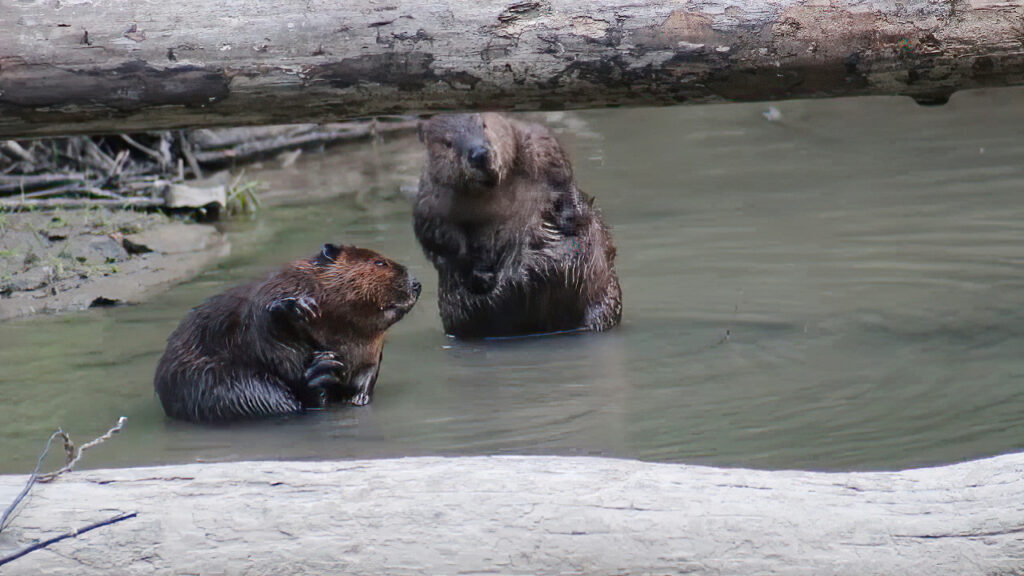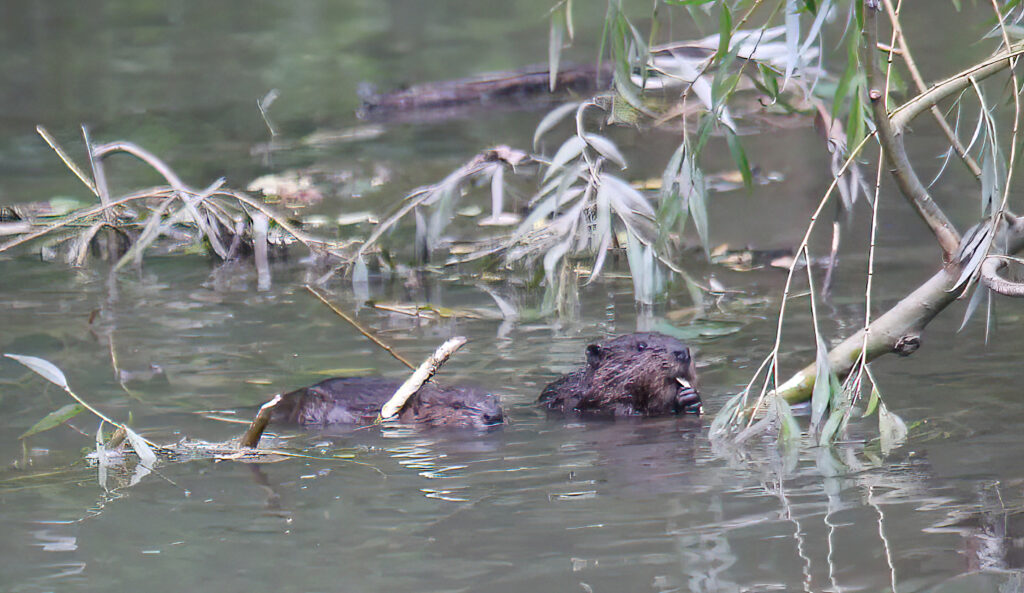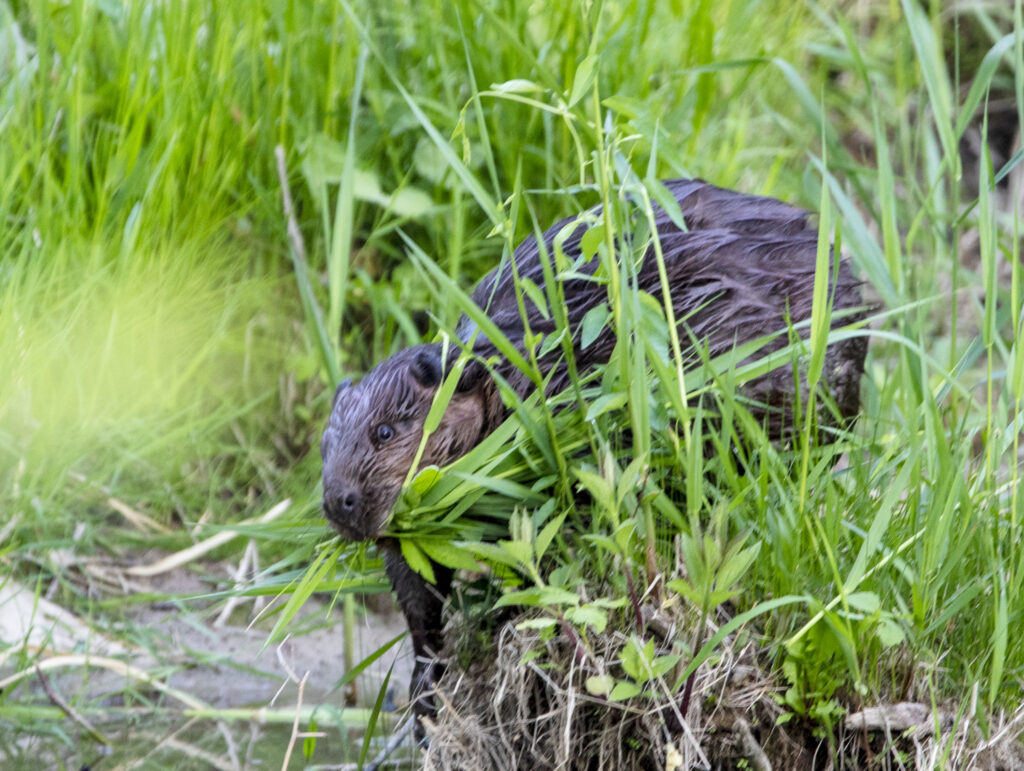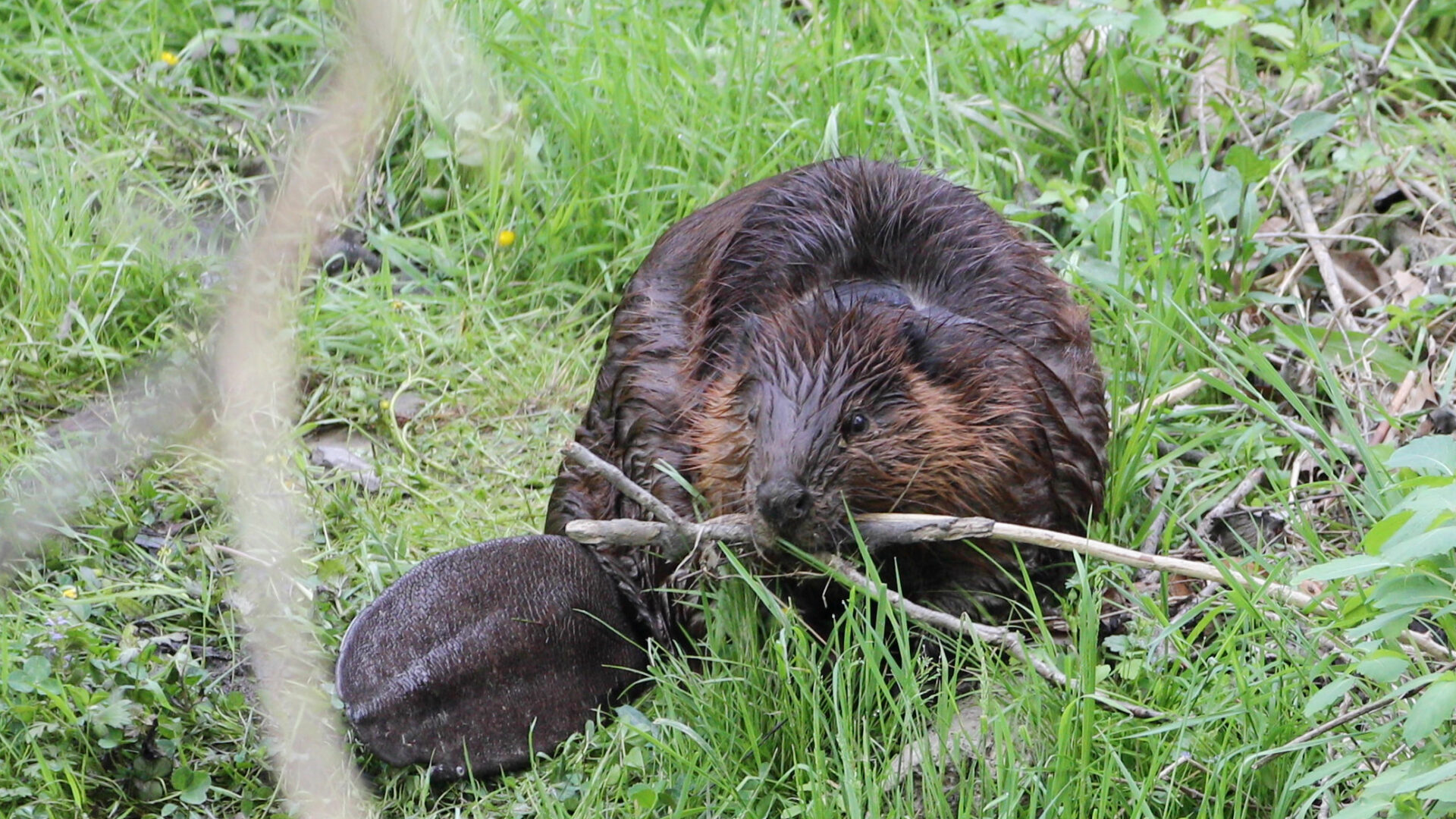Splash! The sound rose above the songs of tree crickets as dusk descended along the shore of 12 Mile Creek. I knew I was close; an animal I had been searching for in Short Hills Provincial Park for four years was nearby. In the darkness, I could barely see a dark shape swimming through the water. Another splashing tail slap, and it was gone. But it had confirmed my hopes – beavers had returned.
The beaver (Castor canadensis) is the largest rodent in North America, justly famed for its dam-building prowess, broad flat tail and environmental impact — and they can be found right here in Niagara.
The beavers I searched for inhabited a meandering section of 12 Mile Creek near Camp Wetaskiwin. I first encountered a pair grooming each other in the summer of 2015. Over the years, I’ve captured many interesting moments and antics with this beaver family, and you can watch the best clips here.
For more information about their behaviour, I spoke with Michael Runtz, author of Dam Builders: The Natural History of Beavers and their Ponds. Runtz is a professor at Carleton University, a naturalist, photographer, and author of more than a dozen nature books. I first encountered Runtz’s vast knowledge of nature in Algonquin Park in the 1990s, when he was leading an interpretive nature walk.
Beavers are one of few animals that can adapt the environment to suit their needs, instead of adapting to it. The trigger for this is sound: “Dam building is shown to be instinctual, triggered by the sound of rushing water,” said Runtz. This sound triggers beavers to build new or repair existing dams.
As the water upstream of a beaver dam backs up, it creates a haven for the beavers to construct a lodge and store food. Other animals and plants benefit from the beaver’s construction as well. “The biodiversity they create supports myriad plants and animals,” explained Runtz.
“For instance, dragonflies prefer a still habitat, like a beaver pond. Damselflies, small animals, and fish like bullheads do well in beaver ponds,” added Runtz. “They also provide habitat for many species of birds like herons and bitterns.
“There’s quite a wide web of life that develops in a beaver pond.”

In 2019, I spotted a mated pair plus two kits in the same stretch of 12 Mile Creek. While they may not have been the same ones, the odds are good: beavers mate for life. “Beavers do generally pair up,” said Runtz, “Until something happens to one.” Runtz said beavers can live 20 or more years in captivity, but in the wild, “a 10-year-old beaver is an old beaver.”
I watched the entire family dine on a willow that had plunged into the creek. Beavers have incisors that never stop growing, plus enamel strengthened with iron. This enables them to chew through trees given enough time – and the ability to easily strip bark and twigs.
Beavers breed in winter and give birth in late spring. Newborns stay in the lodge; when older, they leave the lodge to eat and play. One kit even helped with gathering food as it ferried choice branches from the tree to the lodge.

Beavers are herbivores and their diet is quite varied, said Runtz. “In summer, fresh growth, herbaceous shrubs and wildflowers, yellow pond lily, bulrush and water lilies. In fall and winter, mostly woody material, bark and twigs.”
In southern Ontario, beavers do not fear many predators. Runtz said that the fisher (Pekania pennanti) and great horned owl (Bubo virginianus) may prey on beavers, and red foxes (Vulpes vulpes) may be opportunist predators on young kits at shoreline. In Algonquin Park, eastern wolves (Canis lupus lycaon) are also known to prey on adults.
The animals beavers most often conflict with are humans. Due to their instinctual habit of damming anything that produces the sound of running water, beavers often inadvertently clog culverts or water intakes, and the water backed up by a dam may cause flooding upstream.
A solution to flooding is the beaver baffle, said Runtz. “Beaver baffles are pipes that go through a dam and emerge upstream and control the water level above a certain height. The beavers can remain but dammed water upstream will not continually rise and create greater flooding,”

Beavers can be seen in many places in the region, and they aren’t particularly shy, said Runtz. “In my experience, beavers are quite tolerant of the presence of humans. There are beavers in Toronto. They tolerate people quite well. It’s the other way around. The tolerance of humans to beavers is quite low.“
Dam Builders provides more information and photographs about these incredible rodents. Young naturalists may also be interested in Runtz’s co-authored book At Home with the Beaver. Both can be found in nature bookstores or on Amazon.
